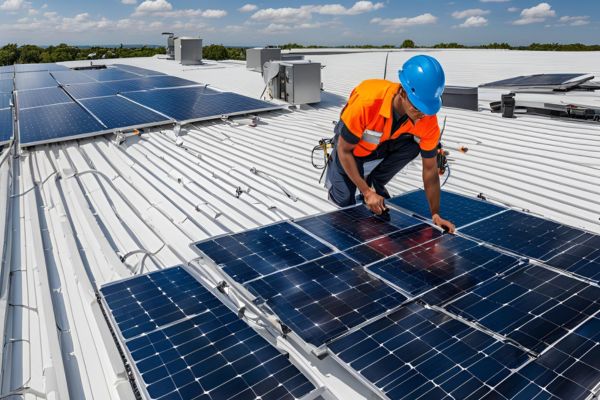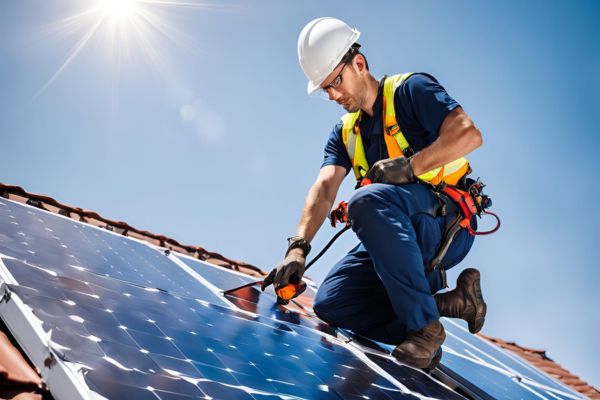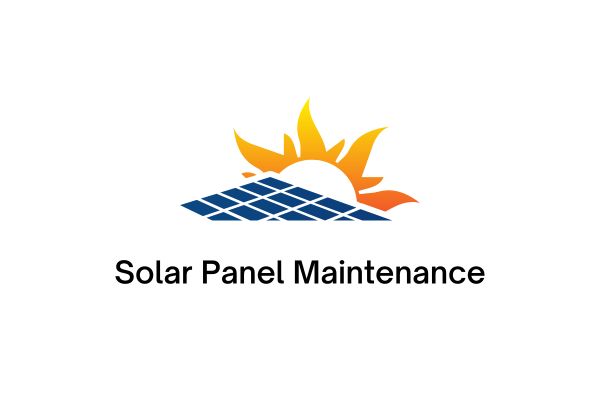Solar Panel Maintenance is an activity to maintain the condition of a facility by scheduling, handling and controlling work so that it is useful for ensuring the performance of an object or component during operation and minimizing damage that results in loss of performance.
Daftar Isi
Purpose of Solar Panel Maintenance

The purpose of maintenance is to increase the life of the product and improve it. However, according to Daryus A, (2008), in his book entitled “Machine Maintenance Management”, some maintenance objectives are as follows:
- To extend the usefulness of a machine asset, so that production capacity and input quality are maintained
- Maintain quality at the right level to meet the needs of the product itself, and production activities that are not disrupted or run smoothly
- Help reduce usage and deviations that are outside the limits, and maintain the invested capital
- Achieve the lowest possible maintenance cost level, by carrying out maintenance activities that can endanger the safety of workers
- Avoid maintenance activities that can endanger the safety of workers
- Conduct close cooperation with other main functions of a company in order to achieve the company’s main goal, namely the best possible profit level and the lowest total cost
Types of Solar Panel Maintenance

1. Preventive Maintenance
Preventive maintenance (PM) or periodic maintenance is maintenance carried out to prevent damage to the system. Preventive maintenance is carried out in a fixed period so that the product produced is maximized. Here is an example of periodic maintenance on solar panels:
- A. Cleaning solar panels from dust and dirt.
Cleaning solar panels is routine maintenance that is carried out every 3-6 months depending on the level of dirtiness. This maintenance greatly affects the output power produced. The dirtier the surface of the solar panel, the less irradiation can be absorbed by the solar cells so that the output power produced will decrease. However, behind that there are negative things that can happen during the cleaning process, namely the surface of the solar panel breaking or cracking. This damage can occur due to 2 factors, namely excessive pressure and workers who are forced to step on the side of the solar panel to reach all sides of the solar panel.
- B. Cleaning dirt on the bottom of the panel assembly.
The solar panel is installed using a mounting assembly that functions as a support, resulting in the bottom of the panel having empty space that has the potential to become a nest for insects or birds. Therefore, cleaning is carried out to prevent damaged components. Cleaning is carried out by checking one by one the bottom of the solar panel while still paying attention to K3.
- C. Inspection of defects in solar panels
Inspection of defects in solar panels such as the appearance of brownish color, physical damage, and corrosion. The inspection is carried out by checking each installed solar panel one by one. A defective panel certainly greatly affects the production results of the PLTS system, therefore this inspection must be carried out periodically to prevent more severe damage.
- D. Inspection of supporting components on solar panels
The supporting components on solar panels are, module clamps, railing bolts, and mounting legs. The inspection carried out is in the form of checking the strength of the supporting components using an L key or ring wrench according to the size of the bolts and nuts used. The goal is to prevent the solar panels from sliding.
- E. Inspection of the solar panel area
The inspection activity of the solar panel area is more focused on the installation of solar panels using ground mounting. Because this type of installation system is still in the traditional way, namely using ground anchors to hold the solar panel support legs. So it cannot avoid the presence of plants that can cause shading in the solar panel area. However, it is possible that other installation systems do not cause shading in the solar panel area.
2. Corrective Maintenance
Corrective Maintenance (CM) or repair maintenance is a maintenance activity carried out when the solar panel is damaged so that it cannot work optimally. One example is a hot point on the solar panel so that replacing the solar panel is the solution.
3. Predictive Maintenance
Predictive maintenance is maintenance carried out to determine changes or declines in performance or physical damage to solar panels. This maintenance usually uses instrument equipment. An example is monitoring the temperature of solar panels using a thermal camera. Monitoring solar panels using a thermal camera is usually because there is a difference in performance from other solar panels, so it is necessary to follow up by monitoring directly using a thermal camera.
Read Also:
